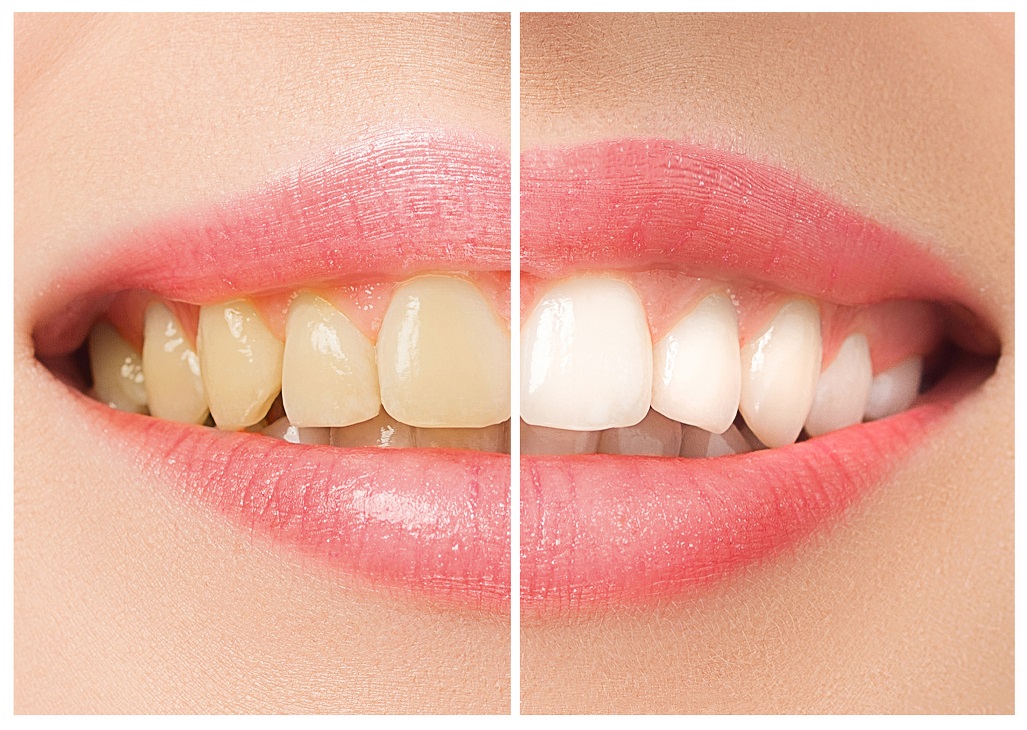
Teeth Whitening
Brushing and flossing are everyday ways to keep your teeth bright, white and healthy. However, if you feel like your smile is lacking some sparkle or is more yellow than it used to be, you’re not alone.
If you are thinking about teeth whitening, here are some of the most commonly asked questions.
Why Did My Teeth Change Color?
Over time, your teeth can go from white to not-so-bright for a number of reasons.
- Food and Drink. Coffee, tea and wine are some major staining culprits. Their intense color pigments attach to the white, outer part of your tooth also known as the enamel.
- Tobacco Use. Two chemicals in tobacco create stubborn stains: tar and nicotine. Tar is naturally dark, and while nicotine is naturally colorless, when exposed to light or air, it turns a brown color.
- Age. Below the hard, white outer shell of your teeth (enamel) is a softer area called dentin. Over time, the outer enamel layer gets thinner and more of the yellowish dentin shows through.
- Trauma. If you’ve been hit in the mouth, your tooth may change color as a result of more dentin being produced or a lack of blood flow.
- Medications. Tooth darkening can be a side effect of certain medications, oral solutions and treatments such as radiation and chemotherapy.
How Does Teeth Whitening Work?
Teeth whitening is a simple process. Whitening products contain one of two bleaches (hydrogen peroxide or carbamide peroxide). These bleaches break stains into smaller pieces, which makes the color less concentrated and your teeth brighter.
Does Whitening Work on All Teeth?
The simple answer is: no. This is why it is important to talk to your dentist before deciding to whiten your teeth.
First off, only enamel will bleach. Any restoration you have such as crowns, veneers or fillings will not whiten. This also applies to the tooth root surface. In addition, tooth whitening will not be effective if your tooth discoloration is caused by an injury.
Also, just like getting a suntan, everyone will bleach differently. While some people tan beautifully, others simply burn or just slightly tan. Teeth whitening is similar. Usually, you will achieve at least two shades lighter than you are at your starting shade, also know as your baseline.
What Are My Whitening Options?
Here are four options to put the shine back in your smile:
- Stain Removal Toothpaste. All toothpastes help remove surface stain through the action of mild abrasives that scrub the teeth. Look for toothpastes that have earned the ADA Seal of Acceptance for stain removal. These toothpastes have additional polishing agents that are safe for your teeth and provide stain removal effectiveness. Unlike bleaches, these types of products do not change the color of teeth, but simply remove stains on the surface.
- Over-the-Counter Bleaching Products. You may see different options online or in your local grocery store, such as toothpastes or strips that whiten by bleaching your teeth. The concentration of the bleaching agent in these products is lower than what your dentist will use and will not provide the same type of results as you would see from a professional bleaching.
- In-Office Bleaching. This procedure, also known as chairside bleaching, usually requires one office visit, 1.5 hours long. During this visit, we will apply bleaching agents to your enamel in different stages, followed by our blue light. The benefits: you are fully whitened in one treatment. The drawbacks: just like tanning, it only lasts for so long until the whitening starts to fade back to your baseline shade.
- At-Home Bleaching. During a brief visit, molds of your top and bottom jaw are taken to fabricate custom trays that only fit your teeth. The trays, a tube of bleach and instructions are sent home for your use. Usually it only takes 10 – 14 uses to reach your whitest shade. After your initial bleaching, you only need to “touch up” about once a month (wear your trays one day a month for 1-2 hours) to retain your new shade. The benefits: you are able to bleach in the comfort of your own home and at your preferred time, it is long lasting (with “touch ups”) and it is more cost effective. The tube of bleach (when kept refrigerated) will last for years. Replacement tubes are available as needed. The drawbacks: you have to apply the bleach yourself (although very easy to do).
Are There Any Side Effects from Teeth Whitening?
Some people who use teeth whiteners may experience tooth sensitivity. In most cases, this sensitivity is transient and will return to normal once you are not bleaching daily. If you do get sensitive, limit how often and for how long you are bleaching.
Leave a reply →